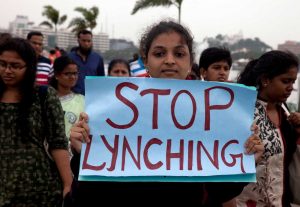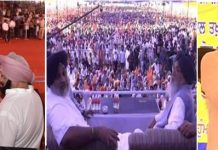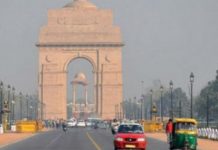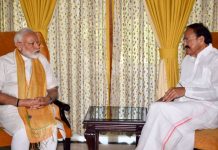 The messages about “child lifters” swirling across many social media platforms have not only left 27 persons dead so far in nine states- Assam, Jharkhand, Odisha, Maharashtra, Gujarat, Andhra Pradesh, etc. but has left many wonder whether social media is doing more bad than good to India’s growing number of mobile Internet users.
The messages about “child lifters” swirling across many social media platforms have not only left 27 persons dead so far in nine states- Assam, Jharkhand, Odisha, Maharashtra, Gujarat, Andhra Pradesh, etc. but has left many wonder whether social media is doing more bad than good to India’s growing number of mobile Internet users.
If statistics are to be believed, mob lynching is nothing new in most of these states and has often claimed lives of innocent people in the name of “witch-hunt”, much before social media was invented and used, although women have been the prime targets.
The Crime in India 2016 report of National Crime Records Bureau (NCRB) under the Ministry of Home Affairs says, 134 people were murdered (mob attacked) in “witch-craft” cases in 2016 alone, with Jharkhand reporting the maximum 27 murder cases followed by Odisha (24), Madhya Pradesh (19), Chattisgarh (17), Gujarat (14) and Telangana (11). Assam, Haryana, Maharashtra, Meghalaya, Rajasthan, Punjab, Uttar Pradesh, and West Bengal reported rest of the cases during the year.
Witch-hunt was one of the eight major reasons behind mob-lynching in 2016, the other being road rage,extremism/Naxalism, casteism, robbery, extortion, rape, class conflict and political reasons.
The number was higher in 2014, out of 157, 30 per cent (127) of such murders were reported in the tribal-dominated Jharkhand followed by Odisha (32), Madhya Pradesh (24) and Chattisgarh (16), said the 2015 NCRB report. The bureau said 2,097 murders were committed between 2000 and 2012 where witch hunting was the main reason.
The police investigation into most of mob attack cases in rural India revealed almost similar modus-operandi — be it in the tea garden areas of Assam, or mining hotbeds of Jharkhand or Odisha.
In a public interest litigation (PIL) filed by Seema Bhuyan, a young lawyer in Gauhati high court, that sought strict action against mob lynching, particularly in Assam argued, “According to our rule of law, no person can be punished with the authority of law. If any person who commits a crime, he/she can be punished through the procedure of established by law.”
However, nowadays it has been seen that people often tend to go for mob lynching and thereby giving punishment to a person without any legal authority for an offence. Preservation of life is the most important right for an individual and the state has to protect it. Such frequent incidents of mob lynching have resulted in the violation of Article 14 and 21 of the Constitution. These kind incidents are a blot on the face of our democracy because we have a democracy, not mobocracy in India,” she added.
The PIL was filed in June this year following the lynching of two youths from Guwahati — Nilotpal Das and Abhijit Nath, on June 8, in a village in Karbi Anglong district. The two youths were beaten to death by a mob of at least 250 people who suspected them to be childlifter.
Nilotpal and Abhijit were dragged out of their black SUV after a youth informed the villagers that two child lifters (Das and Nath) had kidnapped a boy from their Panijuri village and is taking him in their car, leading to the lynching of the two.
WITCH HUNT CASES
Jharkhand
A mob of unidentified persons attacked an elderly couple at Dadgama village in Jharkhand’s Khunti district, after branding them to be witches, killed them and beheaded the lady. The gang, at least six persons barged into the house of the
victim, identified as Satri Munda, 55 and his wife Javni Devi, 50. The mob threatened and assaulted their children when they cried in fear. Although police arrested the killers a few days after the gruesome attack, many in the state have got bails due to police’s failure to gather substantive evidence to prove their involvement. The state continues to struggle such witch-hunt attacks, mostly triggered by superstitions prevalent in tribal society, despite being one of the seven states having a specific law to check witch-hunt was back in 2001.
Assam
Among several cases of witch-hunt attacks in Assam—attack on Debjani Bora, an athlete in Karbi Anglong district in October 2014 and killing of an Adivasi couple in Kokrajhar district in April 2017. The couple at Palashguri village in Kokrajhar district was sleeping in a hut when they were killed after their five children were tied in another hut as they shouted for help. Since then the five children are being taken care of in an orphanage in Nagaon district. After being asked by Gauhati high court in 2016, the state Assembly passed an anti-witch hunt bill, which got its nod from the Centre recently.
Odisha
The attack on the family of Guru Munda, a 40-year-old tribal at Mundasahi village in Keonjhar district in July 2015 is one of the chilling “witch-hunt” murders in Odisha, a state which reports second highest witch hunt attacks after Jharkhand. Munda, his wife, Budhini, two daughters and two sons were brutally murdered in a span of 30-minutes. According to police, although women were the focus of the Odisha Prevention of Witch Hunting Act, 2014, men were also found to be victims in many cases.
Maharashtra
Maharashtra is one state that tried to enact a law against witch hunt and other superstitious practices some years ago. It failed primarily because of opposition from some religious groups that felt that the law might do away with certain ancient rites altogether. The number of witch hunt attacks in the state saw a decline after the state brought in the Prevention and Eradication of Human Sacrifice and Other Inhuman, Evil, Aghori Practices and Black Magic Act in 2013.
Root of witch-hunt lynching
As at least 12 states grapple under witch-hunt lynching, many tried to understand the root causes of such a dangerous practice. A study conducted by Partners for Law in Development, an NGO, witch-hunting is rooted in patriarchy, financial disputes, superstition and other personal and social conflict. More often than not, these conflicts arise out of jealousy or conflict and tension between the victim and their relatives, friends or acquaintances. Lack of proper medical facilities in interior areas often people resort to ojhas or quacks, who often blame a family or woman in a village as a witch, resulting in such lynching. The ‘punishment’ meted out ranges from death to being banished from their homes.
Psychologist viewpoint
Apart from the poor socio-economic condition of the villagers, Deppanjali Medhi, an associate professor of psychology of Gauhati Medical College and Hospital said militancy, riots and violent agitations and the law enforcement agencies’ failure to punish those involved in such crime could have led people to take law into their own hands for “instant justice.” “When people see others being gunned down, deaths in bomb blasts and often victims not getting justice, the fear of death reduces and they tend to take the law into their own hands for instant justice,” she said.
Legal safeguards
Sadashib Narlekar, a Mumbai-based lawyer who is associated with NGOs working for victims of mob violence, said although social media misuse was blamed for the recent lynching, most rural people are unable to distinguish between fake news and the real one and get influenced quickly by such messages and jump into action — be it attacking persons suspected to be child lifters or those identified as witches. “A section of people having knowledge of social media may take advantage of such situation in order to take revenge on a person or a family having a personal grudge,” he said.
Similar facts came to light during an investigation into the recent lynching of two youths in Karbi Anglong district in Assam. A youth, who was identified as prime accused and arrested later told police that following a brief quarrel with Nilotpal and Abhijit, he had called neighbouring villagers informing that the two were child lifters. The villagers trusted him and caught the duo and killed them.
Asian Human Rights Commission, the Hong Kong-based human rights organisation, said since there is no specific penal law criminalising mob lynching in India, those taking part in such activities and murder are held accountable under various sections of the Indian Penal Code. “This could range from provisions such as Section 302 for murder, Section 304 for culpable homicide, Section 307 for attempt to murder, Section 323 for voluntarily causing hurt, Section 325 for voluntarily causing grievous hurt, and when it comes to crimes committed by a larger number of people, Section 34 for common intention, Section 141 for unlawful assembly and Section 120 B for criminal conspiracy, as well as the relevant sections criminalizing rioting,” the NGO said. Meanwhile, NGOs in India have launched a campaign for penal laws against mob lynching under the banner of National Campaign against Mob Lynching.
letters@tehelka.com













